At least 40 protesting students of the Film and Television Institute of India (FTII) were detained by the police on Thursday morning after they allegedly clashed with members of the Staff Association of FTII who were celebrating the newly appointed Chairman Gajendra Chauhan’s arrival by beating drums outside the gate.
The students have been reportedly moved to Deccan and Shivajinagar police stations after the arrest. Meanwhile, the meeting between Chauhan and the members of the FTII society is going on as per schedule.
Earlier in the day, over 100 policemen from Deccan and Shivajinagar Police Station as well as State Reserve Police Force (SRPF) were called, tightening security around the institute, ahead of Chauhan’s visit.
The students were also given permission to peacefully protest. However, after the Staff members brought their celebration rally at the gate, the students confronted the members, leading to chaos outside the institute.
Many students were lathicharged by the police and as many as 40 were detained. Staff members were also asked to stop their celebrations after the incident. Even after the arrest of their batch mates, over 60 students with the protest outside the main theatre.
FTII society members including Satish Shah and Raj Kumar Hirani started arriving at 9.30 am amid tight security.
With the arrival of Chauhan, the meeting began at 11.30 am. Meanwhile, the graffiti which was whitewashed for the meeting reappeared on Thursday morning as the student stuck to their demands. There is no word on the release of the arrested students.
On Wednesday evening, the Deccan Police had issued notices to 17 students who were earlier booked for forcibly confining FTII director Prashant Pathrabe on August 16, warning them of strict action if they disturbed peace at the campus by any means, said Deputy Commissioner of Police.
In a Twitter Poll carried out yesterday, online pollster MyVote.Today @myvote_today asked: ‘In your opinion, how should the Government of India / PM Narendra Modi respond to Pakistan supported terrorism in India?’
Four options were given to voters participating in the Poll, (1) Destroy Terror Camps; (2) Fight to Reclaim Pakistan-occupied Kashmir; (3) Help Baloch (separatist) Movement; (4) Cut Diplomatic Ties.
As many as 3,310 people voted on the Poll in 24 hours. The results were quite surprising. Only 10% preferred the ‘soft option’ of cutting diplomatic ties.
14% voted for the option to fight for reclaiming PoK, while 19% voted to support the Balochistan separatist movement. An overwhelming majority of 57% voted that the Government of India / PM Narendra Modi should destroy terror camps.
On the previous day, the MyVote.Today @myvote_today Daily Poll had asked people who they thought was the mastermind behind regular cross-border terror attacks reportedly emanating from Pakistan.
2,271 people had cast their votes, of which only 6% opined that it was the Government of Pakistan, 11% said it was terrorist groups such as LeT, JeM, JuD, UJC, as many as 41% voted for the Pakistan Army & ISI, and 42% chose the option of all three in conjunction.
As a follow up to the 57% result of yesterday, MyVote.Today @myvote_today is now running an online poll (on Twitter) which asks how should the Indian PM destroy terror camps in Pakistan. About 1,800 people had voted at the time of going to press.
MyVote.Today is a digital technology company that runs online polls, currently only on Twitter. It usually runs one Daily Poll, and sometimes it also runs sporadic Special Polls. MyVote.Today is in the process of launching a Voting App on the Android and iPhone platforms later this month.
Started in early December 2015, the MyVote.Today @myvote_today Daily Poll has become very popular in just five weeks, with an average of 2000-2500 people voting daily.
Their highest Daily Poll on 23rd December got 5320 votes, in which 81% said they want current PM Narendra Modi as the next prime minister of India. The other three choices were Arvind Kejriwal (12%), Rahul Gandhi (4%) and Nitish Kumar (3%).
New Delhi, Jan 6: You must have heard about earthquakes in Nepal (May 2015), Manipur (Jan 2016), Sikkim (2011). Now, a bigger, massive earthquake is expected to hit North India and other parts of Himalayan region.
According to National Institute of Disaster Management (NIDM) of the Ministry of Home Affairs (MHA), a massive earthquake may rattled Himalayan Region.
Media reports quoted MHA sources as saying that earthquakes with a magnitude of 8.
0 or more on the Richter scale are likely to hit the Himalayan region.
They also have issued warning saying that greater risk around the ‘ring of fire garlanding the entire north India especially the mountains’ has been assessed.
According to Santosh Kumar, the director of NIDM, the interconnected plates across Nepal, Bhutan, Myanmar and India could trigger a massive quake. The catastrophic quake may rattle the lives of people living in hill states and parts of Bihar, Uttar Pradesh and Delhi.
Meanwhile, an expert was quoted as saying, ‘the current conditions might trigger at least four earthquakes greater than 8.0 in magnitude. And if they delay, the strain accumulated during the centuries provokes more catastrophic mega earthquakes.’
Tectonic plates underneath the Himalayan region had developed cracks during previous tremors in Nepal (7.3 magnitude on Richter Scale), Manipur (6.7 magnitude on Richter Scale), Sikkim (6.9 magnitude on Richter Scale).
MUMBAI: In order to reduce malpractices and establishment costs, the Maharashtra Transport department will soon launch an ‘e-challan system,’ where traditional methods of paying cash will be shunned and traffic offenders will be asked to swipe their credit or debit cards for the purpose.
According to Maharashtra Transport minister Diwakar Raote, the scheme will be launched in Mumbai from January itself and will be fully operational in the mega-polis in another six month’s time.
“We have had meetings with police officials for the purpose and swipe machines are being procured. We will slowly reduce the handling of cash by traffic constables. Generally, it is seen that to reduce paying the full penalty, people pay a lesser amount of cash, do not take vouchers and get away,” Mr Raote said
“Also, when a traffic violator pays the fine and takes the voucher, handling the money has its own costs. The money has to be submitted to the cashier who then has to count it before depositing it in banks. All these operations are lengthy and require money and manpower. With the e-challan system’ this can be reduced,” the minister added.
Mr Raote said that the money saved by the department will be utilised for other development purposes.
“The scheme will be launched this month itself and in about six months, we hope that the scheme will be fully operational in Mumbai,” Mr Raote said.
According to an official from the transport department, around 1,000 e-challan machines will be handed over to the traffic constables in the first phase of the scheme.
“This will not only reduce corruption in the department, but will also help the police identify repeat traffic offenders,” he added.
He further said that those who are not carrying credit or debit cards when caught breaking a traffic rule, will be given a 15-day window to pay the fines through National Electronic Funds Transfer.
“Afghan officials have confirmed that the operation has ended,” said a Indian government source.
An intense 25-hour gun-battle between security forces and terrorists outside the Indian Consulate in Mazar-e-Sharif came to end tonight with the killing of all the attackers who attempted to storm the Mission building. While three of the attackers were killed in the gunfight overnight, the remaining were neutralised by the night. “Afghan officials have confirmed that the operation has ended,” said a Indian government source.
“The clearance operation is over and all the terrorists have all been killed,” said provincial police chief Sayed Kamal Sadat, according to AFP. Some reports said one of the attackers was captured alive but there was no confirmation about it.
A group of terrorists had attacked the Consulate at around 9.15 pm yesterday with an aim of storming the building but their plan was thwarted by the security forces.
Earlier, official sources said special combat units of the Afghan National Police had recovered three bodies from outside the Indian consulate. Subsequently, some more terrorists were holed up in a five-storey building about 100 metres across the road from the Indian Consulate and security forces had launched a daunting onslaught to neutralise them.
In 2007, Gemma Sheridan and two friends went out on a voyage that was to take them from their hometown of Liverpool, across the Atlantic to the Panama Canal and then onward to the Island of Hawaii. The first stage of the voyage went without incident. However, after passing through the Panama Canal into the Pacific, things took a turn for the worse.
There was a huge storm that took out the boats electronics and washed her two friends over board and seriously damaged her boat. Without any electronics and with a damaged boat, Gemma drifted for 17 days until she came across another storm. During the storm, Gemma was knocked unconscious. Gemma woke up on a beach, surrounded by the wreckage of her boat.
The terrorist dubbed “new Jihadi John” and appeared in the latest Islamic State (ISIS) video threatening attacks on the UK is believed to be Indian-origin British Muslim convert, media reports said on Tuesday.
Siddhartha Dhar, also known as Abu Rumaysah, had skipped bail and fled Britain in 2014 with his wife and their four children to join ISIS in Syria.
Born a Hindu, the 32-year-old ran a business renting out bouncy castles in London before converting to Islam and joining the radical Islamist group Al Muhajiroun.
An official source told the BBC that Dhar is the focus of investigations into the video, which purports to show the killing of five men ISIS says were spying for the UK.
Dhar’s mother and sister have also watched the video, released by ISIS on Sunday, and noticed similarities between the voice of the masked terrorist, being referred to as the “new Jihadi John” by the British media.
“I heard the voice, yes, but I don’t know, I’m not sure of the voice. These are the most difficult questions to answer. I just cannot say. I’m not sure within myself whether it is the truth or not,” his mother Sobita Dhar told ‘The Daily Telegraph’.
His sister, Konika Dhar, from north London, said: “I believed the audio to resemble, from what I remember, the voice of my brother but having viewed the short clip in detail, I wasn’t entirely convinced which put me at ease.
“I can’t believe it. This is just so shocking for me. I don’t know what the authorities are doing to confirm the identity, but I need to know if it is.” She said her brother had converted to Islam more than 10 years ago and her memories of him are from when they were children and teenagers.
“He was a very pleasant boy, and I know it may be hard to believe but he still is, and I still believe that he still can be that person,” she added.
One of Dhar’s former business associates told the BBC he had “no doubt” the voice on the video was that of Dhar, who had been arrested on suspicion of encouraging terrorism by the British police but was later able to travel to Syria after being bailed.
His former neighbours from Walthamstow in east London claimed Dhar’s wife was more devout than him and suggest she may have put him on the path to extremism.
In the months leading up to his arrest, Dhar was accused of calling for the imposition of Sharia law in Britain.
In one interview around that time he said: “We believe that whenever the sharia is established, the pure Islamic state maybe in Iraq or Syria, one day the leader will wage jihad and annexe Britain into the Islamic state.
“We are not going to forget Europe, we are not going to forget Britain, the armies will be sent here to conquer these lands.”
In the latest ISIS video, he is now believed to be the masked man speaking in a British accent and holding a gun.
He says: “We will continue to wage jihad, break borders and one day invade your land where we will rule by the Sharia.”
British Prime Minister David Cameron on Monday said the video was “desperate stuff” from a group that was “losing territory”.
The 11-minute video also features a little boy speaking in a British accent.
‘Channel 4 News’ has reported that a south London man named Sunday Dare recognised the boy in the video as his grandson, Isa Dare, who was taken to Syria by his daughter Grace Dare aka Khadija.
In the video, five men, wearing jumpsuits and kneeling in a desert location, appear to be shot in the back of the head, after making what is claimed to be their confessions.
On Sunday, a massive counter rally was organised by a group against the Akhil Bharat Hindu Mahasabha leader Kamlesh Tiwari for his alleged derogatory remarks on Prophet Muhammad.
A day after a mob torched the entire Kaliachawk police station in Malda district of West Bengal and several vehicles including those of the BSF and the police, tension prevailed in the area on Monday.
While the section 144 continues to be imposed since Sunday night, no arrests have been made so far. “The situation is under control now and we have not yet made any arrests,” IG Law and Order, West Bengal Police, Anuj Sharma told dna.
On Sunday, a massive counter rally was organised by a group against the Akhil Bharat Hindu Mahasabha leader Kamlesh Tiwari for his alleged derogatory remarks on Prophet Muhammad.
There was public outrage in the rally and it turned violent when the furious mob entered the Kaliachawk police station and ransacked it, later setting it on fire. The inspector-in-charge of the police station, Subhabrata Ghosh, was left with serious injuries. Several houses near the police station were also ransacked and set on fire.
The mob then moved towards the NH-34 and torched over 30 vehicles including the ones belonging to the BSF and police. The mob put up a road blockade on the NH-34 and train and road services were affected for several hours
MUMBAI: In a first, Mumbai’s famous Dabbawalas have come up with the ‘Roti Bank’ initiative – a plan to prevent wastage of food at social gatherings.
As per the initiative, leftovers from occasions like birthday parties and weddings are being given to the poor.
To expand the initiative, Dabbawalas have tied up with wedding planners and caterers from across the city.
“Food gets wasted in weddings, so, we had a tie up with the Mumbai Dabbawalas Association and I talked to them, they agreed. So we decided that the waste food in the regions of Mumbai, Thane, Navi Mumbai will be collected by them and will be distributed among the needy,” said wedding planner Rishikesh Kadam, who is now actively involved with the cause.
Nearly 400 dabbawalas are working round the clock to pull off this non-profit initiative. Although it’s been just over 10 days, the response has been overwhelming.
“We got around 100 phone calls in a span of days, but we have a limitation, we have to do our work first and this work later. We want to distribute more food to the poor as far as possible,” said Subhash Talekar, a spokesperson of the Dabbawala Union.
The Dabbawalas are now mulling over ways to schedule a pick up even when the quantity of food is less. They are planning to station one member from the union at local stations at all times where people can drop by and hand-over the leftovers.
Two Indian cities — Delhi and Mumbai — have made it to a top-30 list of the world’s most powerful, productive and connected cities.
According to the study conducted by international real estate consultancy JLL, India’s financial capital Mumbai has been ranked 22nd while the national capital Delhi is placed at 24th.
The list is topped by Tokyo, which along with New York, London and Paris, make the top four ‘super cities’. These four were the destination of over 50 per cent of all foreign capital invested in the Global Top 30 cities.
JLL said its Top-30 global cities account for 64% of the total cross-border investment into the ‘Global300’ — an expanded index of the cities in terms of their “commercial attraction” or economic and real estate power and status.
Mumbai is also on the top-10 “improvers” list.
Top-10 improvers are cities whose scores in the index of “commercial attraction” have improved the most over the past year.
Other cities where commercial attraction has improved significantly include Milan (Italy), Istanbul (Turkey), Tehran (Iran), Madrid (Spain), Cairo (Egypt), Riyadh (Saudi Arabia), Lagos (Nigeria), Jakarta (Indonesia) and Jeddah (Saudi Arabia).
“With growth exceeding 7% in the city over each of the last three years, it is no wonder that Mumbai made a strong presence in the top list,” JLL said, adding that reforms being undertaken by the national government are boosting confidence in the national and metro area economy.
JLL further said Mumbai is enhancing its position as a hub for global corporations, with firms among the world’s 2,000 largest companies headquartered in the city – rising by 50% over the last 10 years.
The index of commercial attraction is JLL’s primary benchmark of the size and strength of a city’s economy and real estate market.
JLL India Chairman and Country Head Anuj Puri further said that construction levels are high, with Mumbai increasing its Grade-A stock by 26% over the past three years, and is expected to add an additional 22% over the next three years.
“Moreover, Mumbai is enhancing its position as a hub for global corporations, with firms among the world’s 2,000 largest companies headquartered in the city rising by 50% over the last 10 years,” he added.
Regarding the ‘Global300’ cities, Puri said: “The cities that make up the ‘Global300’ are the world’s most powerful, productive and connected. Their 1.3 billion citizens account for nearly 40% of global economic activity, more than Europe and North America combined.”
These cities host 88% of the headquarters of the world’s 2,000 largest listed companies, generate 40% of the world’s finance and business employment, and more than 80% of the world’s air passengers pass through their airports.
“They represent the bulk of commercial real estate market activity, amounting to nearly three quarters of global direct commercial real estate investment and over 90% of the world’s prime office stock.
“They are the overwhelming focus of international corporations, retailers, hotel brands and real estate investors,” he added.

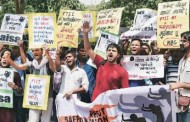


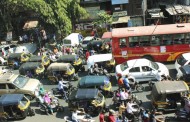
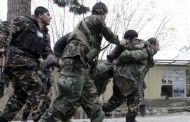
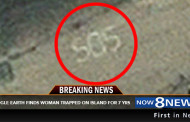
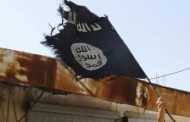
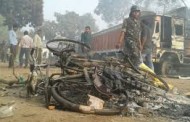

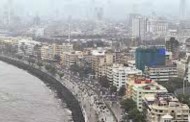





Recent Comments